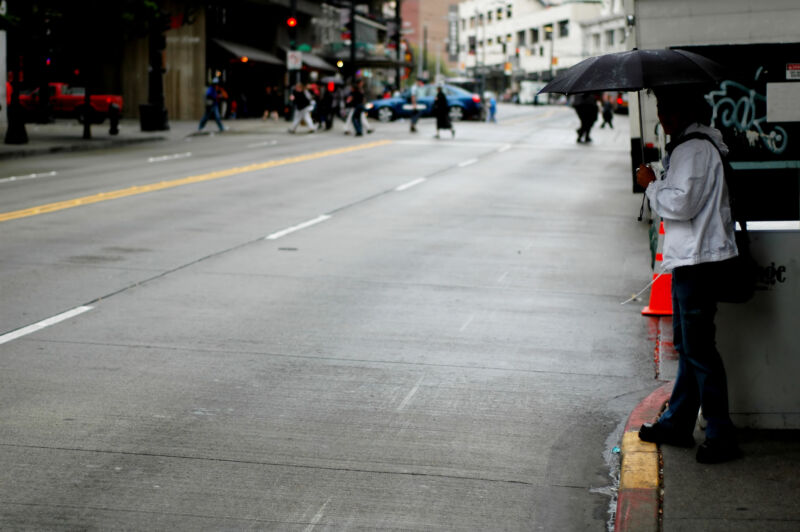Bike lanes and narrowed streets don’t slow emergency vehicles

Enlarge / Converting this street from two lanes in either direction to one lane in each direction with a turning lane in-between would make it much safer. (credit: Getty Images)
Although driving is a privilege, some Americans treat it more like a right. This entitlement leads them to get upset with policy proposals that try to increase road safety by prioritizing vulnerable road users over the wants of drivers. But a new study suggests that a common complaint—taking away lanes from cars makes emergency response times go up—about traffic calming isn't actually true.
American roads aren't particularly safe, and while much of the blame of late has been directed at ever-bigger trucks and SUVs, the problem is more complex than just big cars. Like the built environment, standard American road design, with a pair of lanes going in either direction, makes it very easy to drive much faster than the speed limit, which is often over 25 mph.
This is where road diets come in—they're a relatively cheap and simple way to slow traffic and significantly cut the accident rate along a stretch of road. You take a four-lane (two-way road) and repaint it so there are now three lanes for cars: one in each direction, with a center lane in the middle for turning. The remaining space on either side becomes bike lanes (physically protected ones, please).
Read 6 remaining paragraphs | Comments
https://ift.tt/5W8zXY9
Comments
Post a Comment